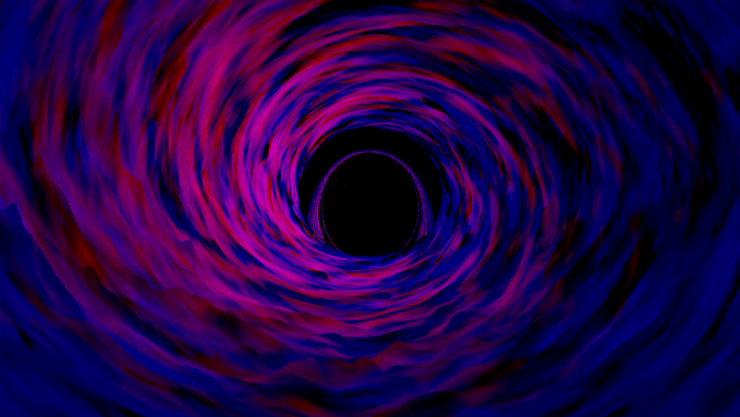Few headlines thrill like “‘Counterportation’: Quantum breakthrough paves way for world-first experimental wormhole.” The article itself delivers, raising the possibility that “disembodied transport (…) without any detectable information carriers” may prove to be physically realizable.
Teleportation by another name is still teleportation.
Particularly for those of us who routinely find themselves sharing public transport with fellow travellers as maskless as they are prone to alarming hacking coughs, the prospect of technology that would deliver us from A to B without traversing the space between is a welcome one. True, counterportation appears uncomfortably close to The Enemy Stars’ disintegration-inducing scanning and remote duplication. Still, whether convenience may compensate for a transportation method indistinguishable from serial self-destruction is a personal matter.
For SF authors, technological teleportation’s utility as a plot-enabler is so clear that it was hard for me choose which works to mention out of so many possibilities. I finally came up with five, drawn from across six decades, from the semi-mythical 1960s (now so long ago that few who remember the period are still alive) to the considerably more recent 2020s.
All the Colors of Darkness by Lloyd Biggle, Jr. (1963)
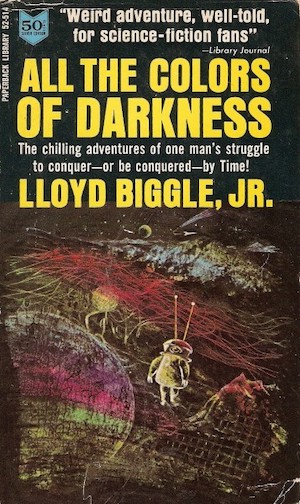
The Universal Transmitting Company has a simple dream: provide the Earth of the mid-1980s with facilities that would allow travellers to step from city to city or continent to continent in a single stride. The business would be instantly profitable and the founders able to sit back and rake in the dough.
This elegant plan is straightforward in concept. In practice, the project has met impediment after impediment. Why, it’s almost as if the Universal Transmitting Company had a very determined enemy.
Called in to investigate, private detective Jan Darzek can easily imagine any number of established concerns who might want to prevent commercial teleportation or at least weaken UTC sufficiently that it would be ripe for a hostile takeover. His error is to assume the culprit is Terrestrial, an oversight he rethinks…once he finds himself imprisoned in an alien base on the Moon.
Jan Darzek is an exceptionally lucky example of his kind, in that his opponents are neither malicious nor casually homicidal towards excessively inquisitive detectives. Consequently, once his opponents grasp Darzek’s potential, he experiences what may be the most spectacular upward career arc in PI history.
“A Kind of Murder” by Larry Niven (1974)
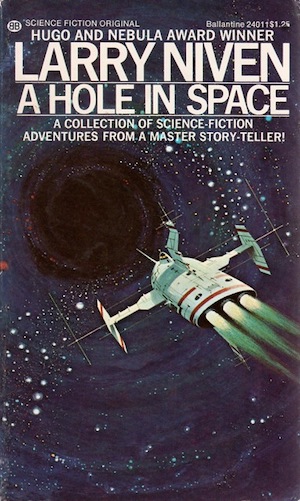
JumpShift made the Earth a very small place. There is nowhere Jeffrey Walters could flee where his obsessed ex-wife Alicia Walters could not easily follow. Thus Jeffrey is at the head of the list of suspects who might have wanted to kill Alicia. As far as the police can determine, Jeffrey has an iron-clad alibi…. Or does he?
This story and the others in the sequence of stories to which it belong have their origins in Niven’s 1969 speculative essay “Exercise in Speculation: The Theory and Practice of Teleportation.” The sequence would be interesting as a model of how to approach creativity. One cannot help but notice that many of the social phenomena about which Niven speculated eventually manifested in analogous form online—in this case, the relentless stalker exploiting technology maliciously.
Aventine by Lee Killough (1981)
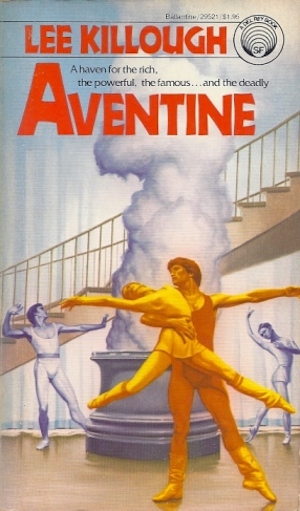
An abundance of Earthlike worlds combined with interstellar-range teleportation facilitates planetary specialization. Aventine sees itself as the artists’ world, a planet where creativity of all forms is not merely tolerated but encouraged. This flattering self-image is one that would not stand up to close examination.
An objective observer might point out that Aventine is less about art and more about catering to the whims and desires of the extremely wealthy. Decadence and self-indulgence, encouraged by persons reluctant to say no, can be a wonderful source of memorable stories…but not for the happiness of those being cosseted.
Aventine belongs to a select subgenre: works about the decadent rich that I suspect were inspired by J. G. Ballard’s lushly decadent Vermillion Sands (1971). The late Edward Bryant’s Cinnabar (1976) would be another. Do any others come to mind?
Glasshouse by Charles Stross (2006)
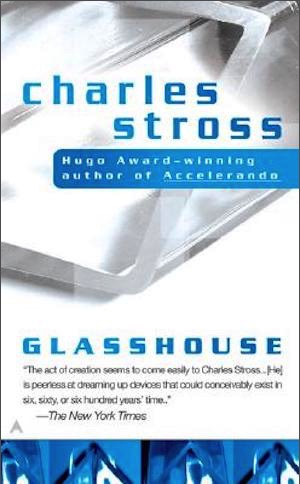
The creators of the facility at the centre of Glasshouse’s plot exploit an obvious implication of technological teleportation. If society is dependent on ubiquitous teleportation, and if that teleportation requires machinery at both ends of the trip, then any given location can be utterly isolated simply by denying it access to the necessary devices.
For reasons that appear compelling at the time, recent memory-wipe subject Robin agrees to participate in a social experiment. Not only could the project advance the cause of science, it will provide Robin with a new identity and undisclosed location far from the assassins who may be in hot pursuit. Once ensconced in the isolated test facility, Robin belatedly begins to suspect the purpose of the project may not be what was promised. Escape without access to teleports will prove challenging.
Whereas teleportation that requires only a transmitter is a fine recipe for geopolitical instability (at any moment, your enemy could teleport an A-bomb into your lap), Glasshouse’s style lends itself to control wrapped in an appearance of freedom. Any destination with a listed teleporter is only a step away, but those without a teleporter might as well not exist.
The Light Brigade by Kameron Hurley (2020)

Having freed the people of Earth from the burdens of democracy and prosperity, the great corporations now provide Dietz with lifetime employment: The war against the rebel human colony of Mars! Inspired by the destruction of Sao Paulo (blamed on the Martians) to enlist in a corporate army, Dietz will confront enemies as often as it takes to eliminate them or for Dietz to be eliminated.
Key to the exercise: interplanetary range teleportation. Soldiers are converted to light, then back to matter elsewhere. The process has known flaws, not least of which is the risk of fatal reassembly mishaps. As Dietz discovers, there are undisclosed bugs as well, one of which condemns Dietz to experience time out of sequence. This provides Dietz with a wider perspective on corporate goals—a perspective the bosses would prefer minions not to have.
Hurley’s teleportation is memorably unreliable, as able to scramble anatomy as to deliver said anatomy to Mars. Scrambling is generally fatal. Readers may wonder why anyone would use the technology. This is because the powers that be have invested a lot of effort making sure the individual preferences of cogs like Dietz play no role in politics. As it turns out, their governmental processes are as unreliable as teleportation.
***
This is, of course, a very small sample of a very large field. Perhaps I overlooked your favourite examples. This was due to lack of room or simple oversight, not a deliberate snub. Nevertheless, feel free to add to the list in comments, which are, as ever, below.
In the words of fanfiction author Musty181, four-time Hugo finalist, prolific book reviewer, and perennial Darwin Award nominee James Davis Nicoll “looks like a default mii with glasses.” His work has appeared in Interzone, Publishers Weekly and Romantic Times as well as on his own websites, James Nicoll Reviews (where he is assisted by editor Karen Lofstrom and web person Adrienne L. Travis) and the 2021 and 2022 Aurora Award finalist Young People Read Old SFF (where he is assisted by web person Adrienne L. Travis). His Patreon can be found here.










